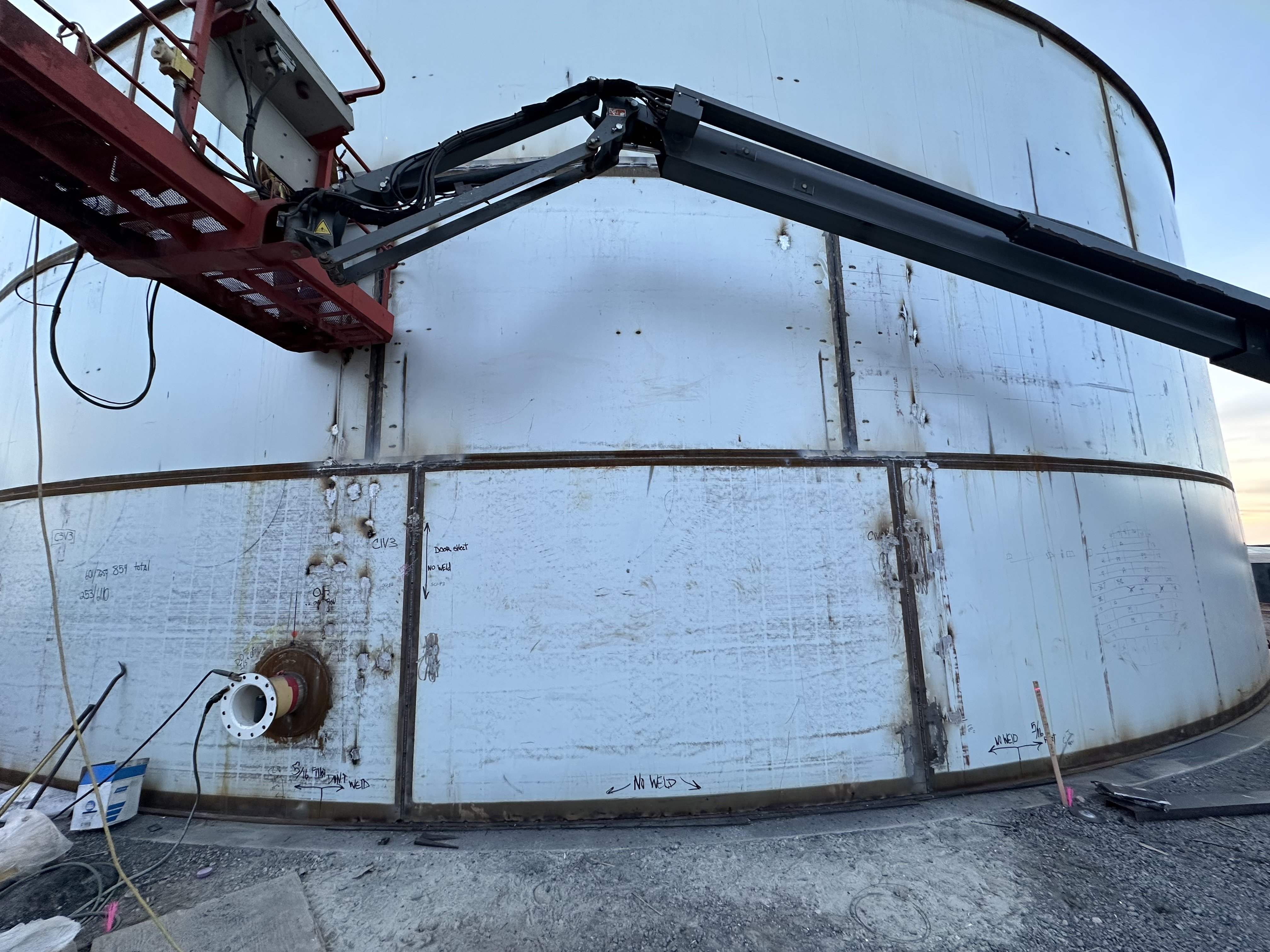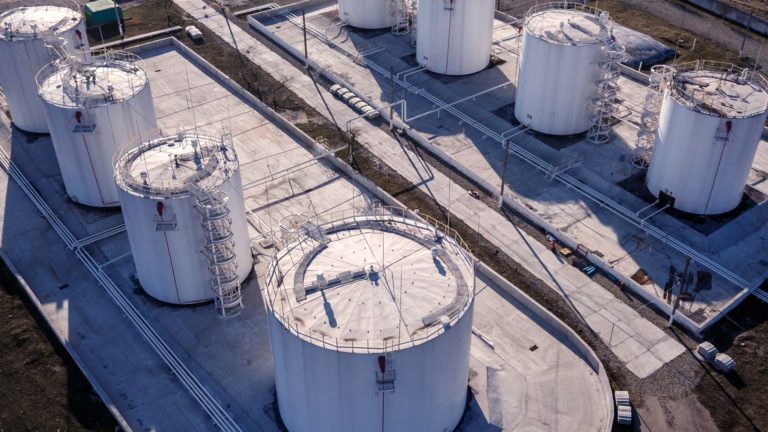Advanced Techniques in Modern Tank Welding Inspection
Wiki Article
A Thorough Overview of Storage Tank Welding Evaluation Standards and Methodologies for Improved Weld Top Quality and Efficiency
The importance of welding inspection criteria in the manufacturing of tanks can not be overemphasized, as they act as the backbone for making certain weld integrity and functional reliability. Different examination techniques, including aesthetic evaluations and progressed non-destructive testing techniques, are critical in determining prospective problems that can endanger performance. Sticking to regulatory criteria not only enhances weld quality but likewise minimizes the risk of expensive failings. As we explore the subtleties of these techniques, it becomes imperative to consider how a systematic approach can revolutionize current practices and lead to considerable renovations in end results.Importance of Welding Examination Requirements

Welding evaluation requirements include a series of standards, including product requirements, welding treatments, and qualifications of employees included in the welding procedure. By implementing these criteria, companies can methodically recognize and correct prospective issues, thus lowering the likelihood of expensive repairs or catastrophic failures. Rigorous evaluation techniques cultivate a culture of accountability and precision, urging welders to maintain high levels of craftsmanship.

Usual Welding Inspection Techniques


Ultrasonic Examining (UT) is another prevalent strategy, making use of high-frequency acoustic waves to detect interior imperfections that might not show up externally. This method is especially reliable for determining spaces or additions within the weld metal. Magnetic Bit Checking (MT) is likewise extensively made use of, specifically for ferromagnetic materials, as it discloses surface area and near-surface problems with the application of electromagnetic fields and ferrous bits.
Furthermore, Liquid Penetrant Testing (PT) identifies surface-breaking issues by applying a penetrant to the weld and afterwards making use of a developer to draw out the penetrant. Each of these methods contributes to a detailed examination approach, ensuring that welds fulfill the strict high quality criteria needed in container building.
Governing Specifications and Conformity
Regulative standards and conformity are crucial elements in making sure the safety and security and dependability of bonded structures in container construction - Tank Welding Inspection. These requirements serve to establish minimum needs for material buildings, welding treatments, and assessment practices, therefore lowering the threat of architectural failures and improving overall performanceSecret organizations, such as the American Society of Mechanical Engineers (ASME) and the American Welding Culture (AWS), provide standards that are widely embraced in the market. Conformity with these requirements not only guarantees adherence to best practices yet additionally fulfills legal and contractual responsibilities, guarding the interests of stakeholders.
Regulatory bodies usually mandate adherence to particular codes, such as ASME Code Area IX for welding credentials and API 650 for bonded storage tanks. These codes lay out needs for welding techniques, certifications of workers, and screening approaches to validate weld integrity.
Routine audits and assessments are vital to maintaining conformity, as they aid recognize deviations from established standards. Non-compliance can result in significant penalties, task hold-ups, and safety dangers. Hence, a durable understanding of regulatory standards and a commitment to compliance are critical in attaining top notch and sturdy bonded storage tank structures.
Non-Destructive Evaluating Methods
How can the integrity of bonded frameworks be ensured without creating damages? his explanation Non-destructive testing browse around here (NDT) methods offer a durable remedy, allowing examiners to assess weld quality without endangering the product - Tank Welding Inspection. Among the most usual NDT methods are ultrasonic testing (UT), radiographic testing (RT), magnetic particle screening (MT), and color penetrant testing (PT)Radiographic testing includes passing X-rays or gamma rays through the weld, producing images that disclose architectural defects such as cracks or voids. This method is vital for analyzing the honesty of complicated welds.
Magnetic bit screening is suited for ferromagnetic materials, where magnetic areas expose surface area and near-surface suspensions. Dye penetrant testing uses a liquid color to highlight surface-breaking problems, making it a reliable approach for non-porous materials.
Each of these NDT techniques has unique advantages, permitting detailed evaluations tailored to certain products and welding processes. By implementing these methods, sectors can ensure the dependability and safety of bonded frameworks, inevitably enhancing general performance.
Enhancing Weld Top Quality Through Inspection
Reliable examination plays a vital duty in boosting weld top quality, functioning as a vital Discover More checkpoint in the construction process. By determining prospective problems early, assessments minimize the risk of endangered structural honesty and guarantee conformity with industry requirements. Utilizing a mix of visual exams, non-destructive screening (NDT) approaches, and mechanical evaluations, inspectors can detect issues such as porosity, splits, and incomplete combination.Implementing a durable inspection protocol not just boosts the overall high quality of welds but additionally fosters a culture of accountability among welders and fabricators. Routine training and qualification of inspection employees make sure that they are outfitted with the necessary abilities to identify and attend to potential issues successfully. This proactive approach reduces rework and connected costs, eventually adding to project efficiency.
Moreover, thorough documents of inspection findings supplies beneficial understandings into recurring issues, assisting in constant enhancement in welding practices. By leveraging sophisticated technologies, such as automated ultrasonic testing or electronic radiography, weld quality can be improved through extra accurate evaluations. To conclude, a rigorous assessment process is essential in attaining premium welds, ensuring security, dependability, and long life in container construction.
Conclusion
Finally, the implementation of strenuous tank welding examination criteria and techniques is important for making sure weld stability and performance. By making use of a combination of aesthetic evaluations, non-destructive testing methods, and adherence to regulatory criteria, companies can successfully recognize and mitigate potential issues. Promoting a society of responsibility among welders additionally boosts the top quality of welding procedures. Inevitably, these methods add to reduced structural failures, lower repair work expenses, and boosted operational effectiveness within the market.Report this wiki page